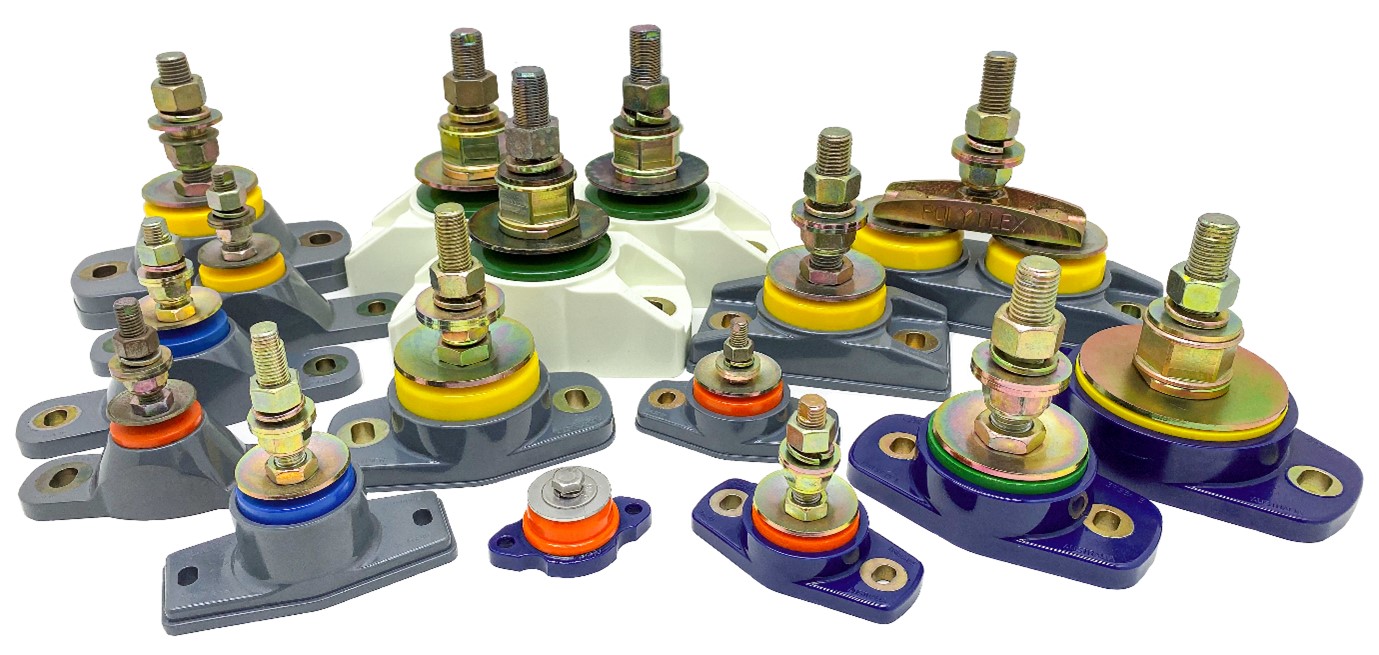When maintaining a vessel one of the most overlooked components is the engine mounts. While engine mounts for boats may not be anything glamorous, this component plays an important role in the engine room. Engine mounting systems are the connection between the engine’s power and the vessel’s hull making it crucial to have strong and well-designed engine mounts. However, even the best quality engine mounts can have problems when not installed properly.
The most common reasons for engine mount failure are:
- General wear and tear damage to the rubber/polymer material.
- Metal components damaged by corrosion.
- Improper installation.
- Under sizing.
- Hard shifting.
- Groundings.
- High loading impact/excessive g force caused by running hard in a high sea state.
- Poor vessel structure, such as, weak stringers or a flexing hull.
Of the reason’s above, improper mount installation is most often the cause of poor engine mount performance. It is important to ensure installation is done correctly. This will make sure your investment is protected and avoid premature wear of the engine, prevent damage and most importantly, improve overall passenger comfort and safety.
Below is the important information to consider ensuring the best fit and installation of your marine engine mounts.
Parallel Is Your Friend:
Installing the engine mounts for boats parallel to the engine’s centerline is important. The engine bed/bracket must be parallel to both planes (the mounting surface must be parallel with the engine crankshaft centerline). If the engine mounts are not installed parallel, they will become “point loaded”, with one end of the polymer core compressed, and the other unevenly tensioned. This could result in poor performance, a higher potential for stud fracturing, or premature failure.
Height Matters:
It is important the engine bracket isn’t posted to high on the stud. The engine bracket is supported by the adjusting stud. Ideally, the engine bracket should sit as low as possible on the adjusting stud. The higher the bracket sits on the adjusting stud, the more stressed the stud becomes from the propeller’s thrust risking a break. Over-extending can lead towards broken studs, or failure due to thrust because the polymer core is deformed. If the brackets ends up to high on the stud shimming is the solution. Shim the engine mount from the bottom using a non-compressible material such as steel, aluminium, fiberglass or polyurethane.
Support The Engine Mounts Properly:
Engines mounted on weaker stringers can lead to transmission failures. This is due to the most damaging part of the misalignment being taken by the transmission coupling and output shaft bearings. If the engine mounts can’t be installed directly on the stringer, it is recommended to build heavy-duty brackets that don’t flex.
Use The Correct Hardware:
When securing the engine mounting systems to the stringer, stainless steel hardware doesn’t have the tensile strength and rigidity needed for most installations. The ideal fastener is grade eight mild steel to handle the expected loads and washers should be thick and heavy-duty. All Poly Flex mounting systems come ready to install with the suitable hardware.
Ensure The Load Is Equal:
Each engine mount must carry the appropriate load. Having different loaded engine mounting systems can cause an imbalance, resulting in poor isolation and premature failure. Unevenly loaded engine mounts for boats can in fact cause more vibration, defeating the purpose of an isolation mounting system. The ideal goal is the balance the weight of the engine/gearbox on each engine mount for the most even distribution.
Ensure The Surface Is Clean:
Mating surfaces should not be painted. Under heavy compression, even a thin layer of paint can cause a loss of tension. Ensure the engine bed is clean of any debris or rust before installing the engine mounting systems.
For more information regarding Poly Flex engine mounting systems, please click here. Otherwise, please contact us today for all your engine mounting requirements.



